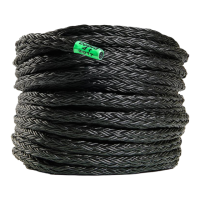22
Planning, tendering and using cobra
®
in accordance
with "ZTV Baumpflege"
"ZTV Baumpflege" defines tree cabling systems as
connections between crown parts that are in danger
of breaking. They are designed to prevent one or
more crown parts from breaking and falling off.
The advantage of using tree cabling systems to
restore the break resistance of an older or badly
compartmentalised tree is that there is no need
to cut the tree back to any great extent, thereby
retaining the leaf mass, which is absolutely vital for
photosynthesis and for building up compensation
wood on a weakened tree.
The type of tree cabling system used and its material
must be adapted to the individual conditions on the
tree and must meet the following requirements in
accordance with ZTV:
• non-invasive fitting and use
• lasts for at least 8 years
• can be adjusted according to tree/branch growth
• must not cut into or chafe the tree/branch
• must distribute the pressure on the anchor point as
the tree/branch gets wider
In addition to having the system installed by
professionals, it is also important that the required
degree of supported and the expected strength are
described as precisely as possible from the planning
and tendering stage.
An accurate and correct description also makes it
easier to monitor and approve completed work and
involves the following points, features and options:
1. USE AND REQUIRED DEGREE OF BRACING:
a) Required degree of supported and type of tree
cabling system:
• dynamic breakage cabling
• static breakage cabling
• load/support cabling
B) Service life
• permanent use
• temporary use
2. ARRANGEMENT:
a) Connection type:
• Simple cabling
• Triangular cabling
b) Number and diameter of branches to be
supported
c) Number of tree cabling systems
d) Number of levels
e) Orientation: horizontal or vertical
3. CONNECTION:
a) Description of main features:
• Type: Single-component or multi-component
system
• Elasticity
• Tensile strength
• Durability
4. FASTENING:
• Non-invasive connection that can be adjusted
as the tree/branch grows thicker (must not
become ingrown or chafe the surface and must
allow adequate distribution of pressure)
• Positioning (must not slip out of position)
5. DOCUMENTATION, INSPECTION, MAINTE-
NANCE:
• Type and scope of documentation
• Type and scope of inspection and maintenance
6. INSTALLATION:
The installer must be competent in order to
decide how the defined required degree of
supported can be achieved in the tree.
For more information, see "ZTV
Baumpege" (FLL e.V., Bonn) or
visit www.l.de
Info

